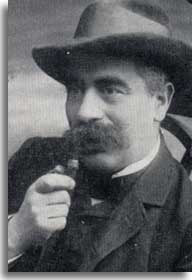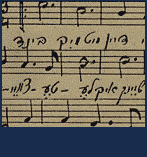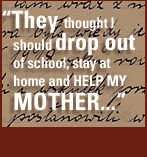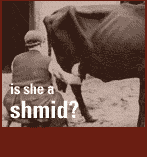

Modern Yiddish Literature.
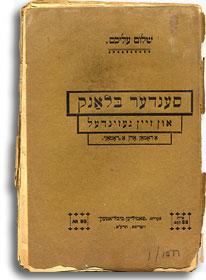

Readers habituated to Yiddish translations of the Bible might not have understood the modern concept of an author, but they certainly related well to an itinerant salesman barely able to tell his story because he is too busy advertising his wares.
Although there were Yiddish writers who preceded Abramovitsh, he was the foremost Yiddish innovator. In artistic masterpieces, he reproduced Eastern European Jewish life of the 19th century in all its shadow and light, from undernourished children and heartless officials, to luftmentshn-Jewish men with their heads in the clouds and without visible sources of income-and saintly Jewish mothers. Although he was satiric and criticized the behavior of his fellow Jews, his stories raised the bar for Yiddish writers and injected pride into writing Yiddish.
An author named Sholem Rabinovitsh entered theYiddish literary scene in the early 1880s and became the heir to Abramovitsh under the pen name "Sholem Aleichem," meaning Hello, how do you do?, the conventional greeting in Yiddish. And, as opposed to the critical edge of Abramovitsh's work, his pseudonym implies just how warm and hospitable his literature was to his readers. Most people today know him because of Fiddler on the Roof, a musical play that was based on a novel originally entitled Tevye the Dairyman, which he began writing in the 1890s. In general, Sholem Aleichem's works blend humor with moments of poignancy that appealed to masses of readers. But the first measure of formal acclaim came in 1888 when he published Di yidishe folksbibliotek, the first anthology of modern Yiddish literature. With it, he attracted prestige to the burgeoning literary movement and the attention of more writers. Although he eventually moved to New York, Sholem Aleichem was an important Zionist and wrote many stories that promoted Zionist ideas to his readers.
The names of Mendele Mokher Sforim and Sholem Aleichem are often uttered together with that of a third writer, Yitskhok Leybush Peretz (1852-1915). Together they are recognized as the "classics" (di klasikers) of modern Yiddish literature. Peretz grew up in a cultural context that was more Polish than Russian and lived much of his life in Warsaw. He wrote essays, poetry, and drama, but his short stories were his greatest achievements. In them he combined sketches of real life people with flights into the romantic. The many poor and humble characters he drew, like Bontshe the Silent (Bontshe shvayg), were not crushed by the difficulties of their lives because they had faith in a heavenly world to come.


In Peretz's story If Not Higher, a disciple of a Hasidic rebbe boasts to a Lithuanian Jew that his rebbe goes to Heaven everyday instead of attending morning prayers. Skeptical of such a fantastical story, the Lithuanian hides beneath the rebbe's bed one night determined to find out the truth about his mysterious morning activity. He watches from this hiding place as the rebbe, instead of putting on his caftan, puts on peasant clothes and then follows the rebbe as he makes his way to the forest. He watches him cut wood and deliver it to an old and sick woman. When he returns to the rebbe's disciple who again boasts that his rebbe ascends to heaven, the Lithuanian responds, "If not higher."
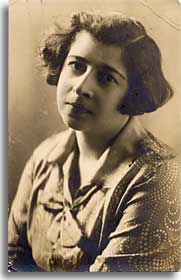

As opposed to Abramovitsh who sought to teach his fellow Jews through his literature, Peretz envisioned the creation of a secular Jewish culture sustained in part by its literature. This is why it was so important to him to encourage others to write Yiddish. His home in Warsaw became a shrine to which budding Yiddish writers made pilgrimage. The short-story writers Avrom Reisin (1876-1953), I.M. Weissenberg (1881-1938), Der Nister, Rokhl Fraydenberg and Rokhl Korn, playwrights Dovid Pinski (1875-1959), Peretz Hirshbein (1880-1948), Yehoash (who translated the Bible into a modern literary Yiddish) and the best-selling novelist Sholem Asch (1880-1957) are only some of the most famous Yiddish writers who visited Peretz in the early days of their careers. Each with his unique voice, they contributed to Peretz's ideal of Jewish literature as one grounded in Jewish traditions and Jewish history, one encompassing the totality of Jewish life.









